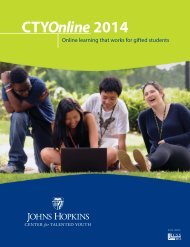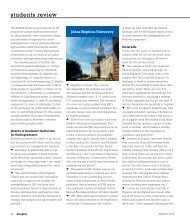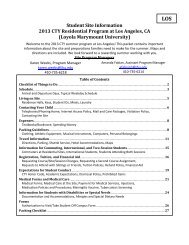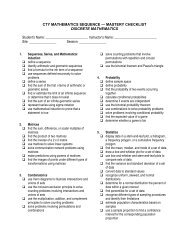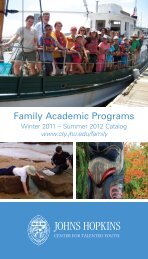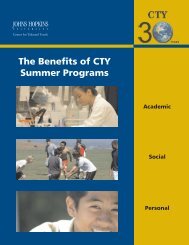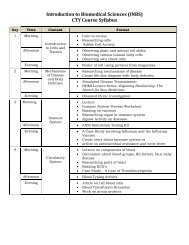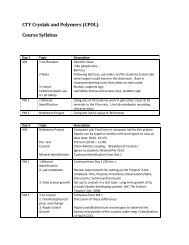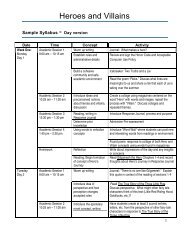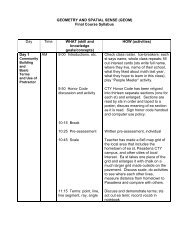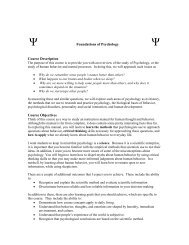Etymologies (ETYM) CTY Course Syllabus
Etymologies (ETYM) CTY Course Syllabus
Etymologies (ETYM) CTY Course Syllabus
Create successful ePaper yourself
Turn your PDF publications into a flip-book with our unique Google optimized e-Paper software.
●●●Ayers, Latin lesson 16: lesson Weakening and Hyperbole, all noun-forming suffixes fromassignment I and select bases from assignment II (LEG/LIG/LECT, MON,SOLV/SOLUT)Ayers, Latin lesson 17: lesson Change of Meaning due to Changing Concepts and selectbases from assignment II (MINOR/MINUS/MINUT, PATI/PASS, QUIR/QUISIT/QUEST,SEC/SEG/SECT)Bragg, Chapter 6: ChaucerMorning 1 (9:00 – 10:30 a.m)● Bases from Ayers, bases from Latin lessons 11 and 12○ Individual activity: Complete exercises from Ayers and Dettmer for Latinlessons 11 and 12● Chaucer○ Lecture: “Romance” languages, Latin and vernacular literature in the MiddleAges○ Activity: For most people, Chaucer is the earliest work of literature intelligible tomodern English speakers. This activity should give the students a detailed senseof what English looked in the fourteenth century, and therefore a better idea ofhow languages change over time. Each student will be given a copy of the theCT’s prologue (lines 1-42) in Middle English with a side-by-side Modern Englishtranslation (available from http://www.fordham.edu/halsall/source/CT-prologpara.html).The students will fold the sheets in half so they can only read the theMiddle English side. They will then read it and write out their own Modern Englishrendering of the passage. When they are finished, they can unfold the handoutand see how close they were. During this process they take note (withhighlighters, pens or pencils of two different colors) of what words have changedover the centuries, and what words have remained essentially the sameBreak (10:30 – 10:45 a.m.)Morning 2 (10:45 a.m. – 12:00 p.m.)● Etymology Olympiads. Specialty: Abstract and Concrete○ Activity: In groups/teams, students create the highest possible number of nounswith the noun-forming suffixes listed in Latin lessons 14, 15 and 16 from Bragg.Every noun is worth 1 point. Nouns must be listed under one of the followingsemantic categories: act, result of an act, physical object, abstract concept,quality, state. Bonuses:■ Morphological diversity. If each suffix was used at least once, there is a15 points bonus.■ Semantic diversity. If there is at least a name for each semantic category,there is a 20 points bonus. Extra bonus: each noun that can carries bothan abstract and a concrete meaning gives a bonus of 5 points.○ Individual work: Read Latin lesson 13: Adjective-Forming Suffixes only. Latinlessons 14, 15 and 16: Noun-Forming Suffixes only. Latin lesson 15: Changefrom Abstract to Concrete, and Vice Versa



